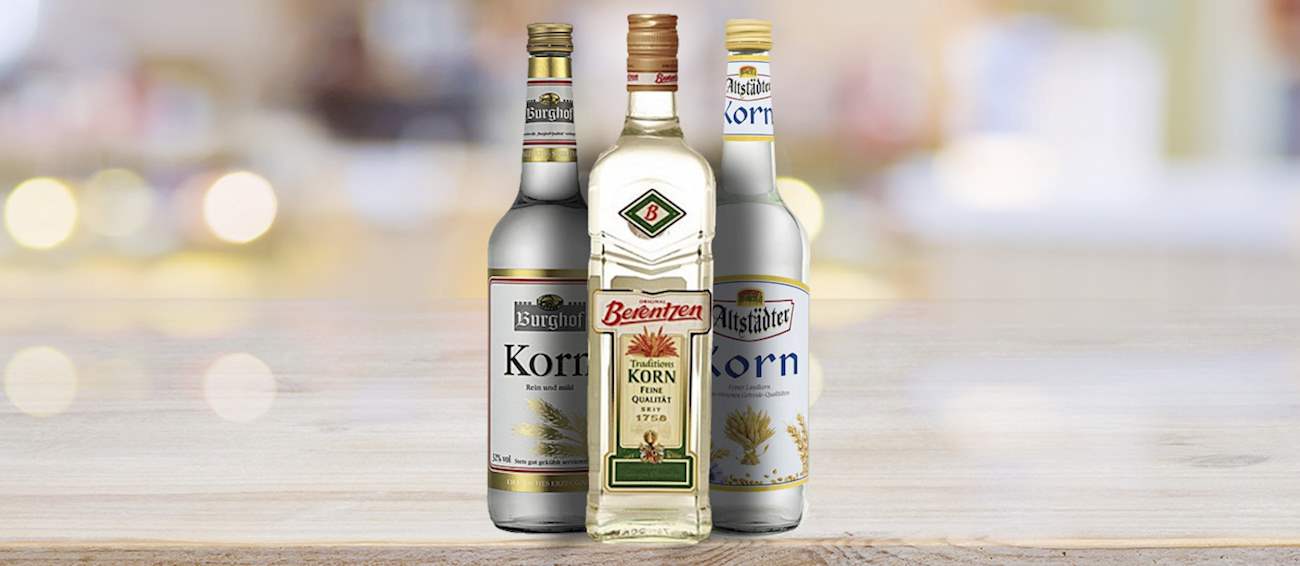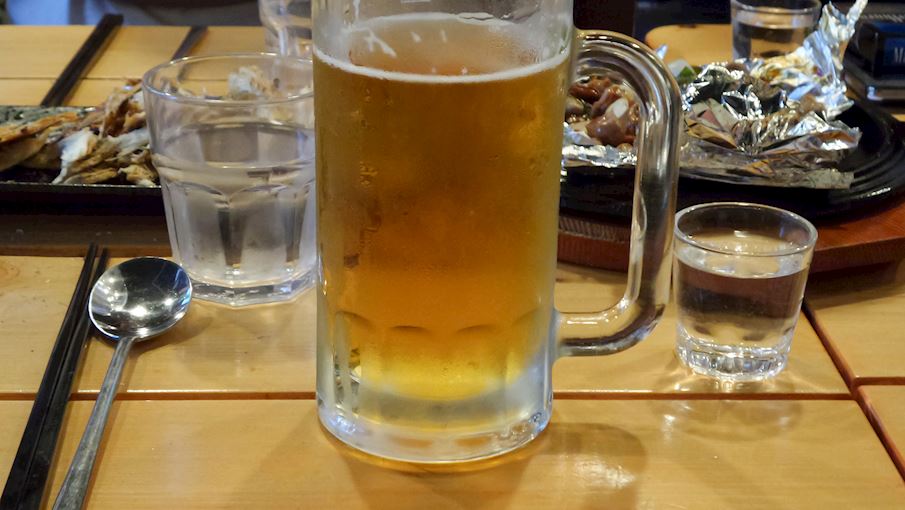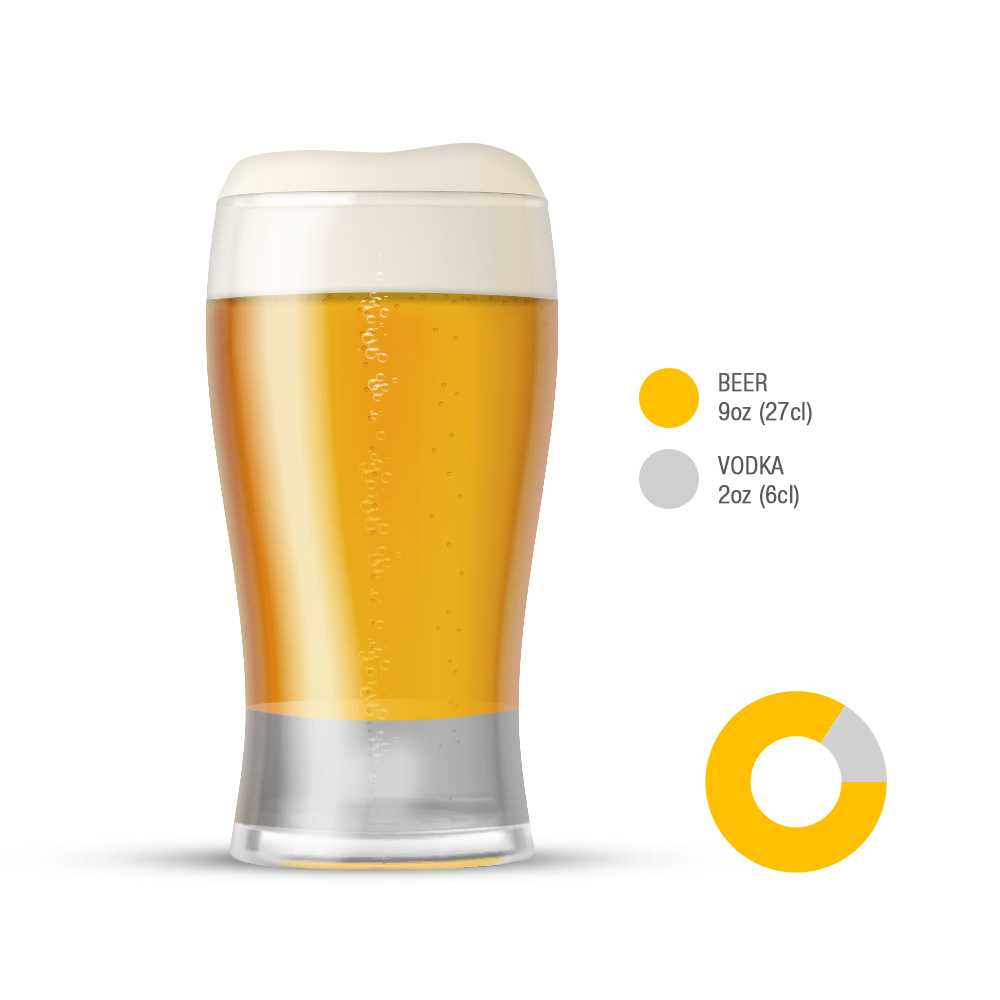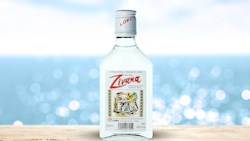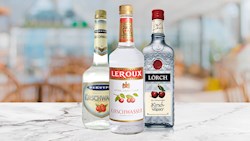Yorsh is a popular Russian mixed beverage made with a combination of beer and vodka. The ratio of ingredients may vary depending on personal preferences. After the ingredients have been combined, it is recommended to drink the cocktail quickly, as is the custom in Russia, because Yorsh is traditionally consumed in social settings after a toast.
Although vodka does not alter the flavor of beer that much, it greatly increases the alcohol content in the cocktail, so it is quite suitable if one wants to get drunk as fast as possible.
Korn is a German grain spirit that is traditionally distilled from fermented mash of wheat, rye, buckwheat, barley or oats. This strong colorless drink is never sweetened or flavored, and it has to have a minimum of 32% ABV, but if the alcohol content is higher than 37.5% the drink is named Kornbrand.
It is believed that the production of Korn started in the 15th century, and although it is enjoyed throughout the country, it is especially popular in the northern parts of Germany. The drink is usually low-priced, but oak-aging may provide for more complex and better-quality expressions.
A decadent cocktail made with absinthe and champagne is known as Death in the Afternoon. Thanks to its inventor - Ernest Hemingway, it is often referred to as the Hemingway Champagne, or simply The Hemingway. The cocktail originates from 1930's Paris, when the writer spent time in the city writing and enjoying absinthe.
Due to the emulsification of absinthe, the cocktail is milky in appearance, with a bubbly structure, and Hemingway’s instructions were to drink three to five of these cocktails slowly from a champagne glass.
This traditional Czech drink was invented in the 19th century as a substitute for the original Caribbean rum. It is usually distilled from potatoes or sugar beets to create a base that is then enriched with rum essence. The drink was initially classified as rum and carried the name tuzemský rum (domestic rum), but since it is not distilled from sugarcane, European regulations prohibited its original name and classification. Tuzemák is still produced in the same way, and it is a staple drink across the country.
It can be enjoyed neat or in cocktails, but it is also used in the preparation of desserts, especially traditional Czech Christmas cookies (vánoční cukroví).
MAIN INGREDIENTS
Aguardente bagaceira is a clear and colorless Portuguese spirit distilled from grape pomace—the skins and pulps left as a by-product of winemaking. It is made by winemakers, but it is mostly produced in rural areas as a type of rustic drink that is not intended for commercial production.
Aguardente bagaceira can vary in quality, depending on the distillation and the base ingredient. The best examples should be powerful but with a smooth, warming finish and a fruity grape aroma. The distillate is sometimes aged to produce a softer, mellower style known as bagaceira velha.
Café com cheirinho is a Portuguese coffee with added alcohol. Most varieties include a splash of fruit, wine, or pomace brandy (aguardente), while some include a dash of medronho (fruit brandy made from medronho fruit).
Occasionally, the spirit can be served on the side. This combination is especially favored during colder seasons, and it is best enjoyed as a digestif.
MAIN INGREDIENTS
Karsk is an aromatic Norwegian cocktail that is traditionally served hot. It is made with a combination of coffee and moonshine. To prepare it, a small coin is traditionally placed on the bottom of the cup, which is then filled with strong, hot coffee until the coin is completely covered.
The moonshine is then added to the cup until the coin resurfaces. There is also a variation on Karsk made with vodka instead of moonshine. The name of this cocktail is derived from the adjective karsks, which means vigorous in Old Norse.
Gruit is a term that describes a mixture of herbs used as a beer flavoring, but it is also used to denote the drink that has been flavored with these herbs. Although it is sometimes classified as such, gruit is not technically considered a beer style.
It is believed that they first appeared in western Europe, probably Netherlands, Belgium, or Germany. The combination of herbs and spices used in gruit varied, and it mainly depended on location and availability. Popular options included bog myrtle, yarrow, wild rosemary, and mugwort, but laurel, cumin, nettle, lemon balm, caraway, mint, juniper, and other herbs and spices were also added.
Kadarka is a red grape with an uncertain origin. It is most likely a native Balkan variety that spread during Ottoman rule. Due to its finicky nature, it has slightly declined in popularity, but it is still an important red variety, especially in Hungary.
Kadarka is a late-ripening grape that mainly produces fruity and elegant red wines. It is versatile and terroir-driven, so the wines can often vary in character, but they usually have light to medium body, bright acidity, and low tannins. The aroma is typically fruity, often with hints of spice and sometimes with subtle floral notes.
Crémant de Bordeaux is a French appellation for white and rosé sparkling wines that are made from typical Bordeaux grapes such as Ugni Blanc, Sauvignon Blanc, Sémillon, Cabernet Franc, Malbec, or Merlot. The wines are produced with traditional method (méthode traditionelle) in which the second fermentation takes place in the bottle.
White crémants usually have aromas of hazelnuts, white flowers, citrus, and dried fruits, while rosés tend to display aromas of red berries. These fresh wines make a great aperitif, but they can also match desserts and cheese, while white wines may pair well with seafood.
TasteAtlas food rankings are based on the ratings of the TasteAtlas audience, with a series of mechanisms that recognize real users and that ignore bot, nationalist or local patriotic ratings, and give additional value to the ratings of users that the system recognizes as knowledgeable. For the “100 Worst Rated European Beverages” list until April 19, 2025, 32,192 ratings were recorded, of which 25,252 were recognized by the system as legitimate. TasteAtlas Rankings should not be seen as the final global conclusion about food. Their purpose is to promote excellent local foods, instill pride in traditional dishes, and arouse curiosity about dishes you haven’t tried.
